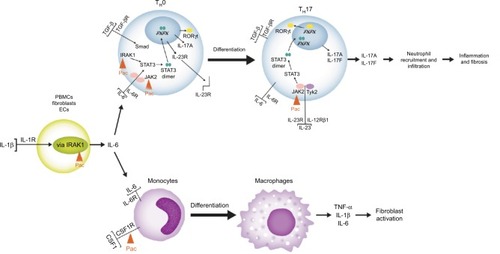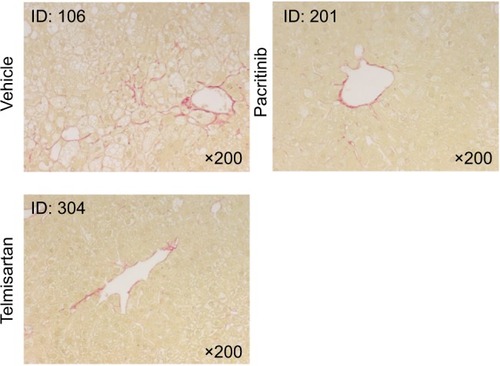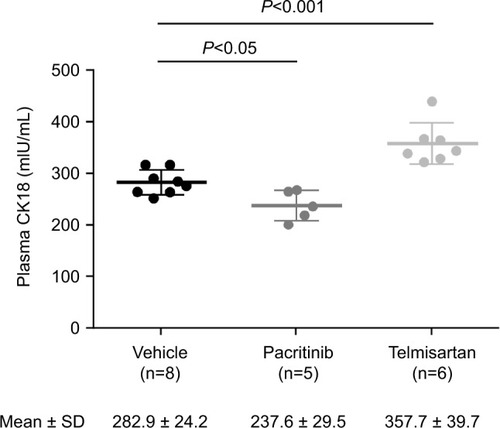Figures & data
Table 1 Treatment schedule for all groups during weeks 6–9
Figure 1 Body-weight changes in all treatment groups (n=8 per group). *P<0.05, telmisartan vs vehicle.
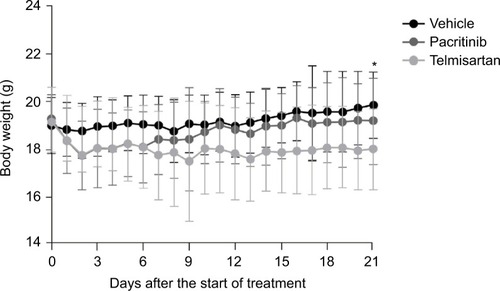
Figure 2 (A) Body weight, (B) liver weight, and (C) liver:body weight ratio on day of death.
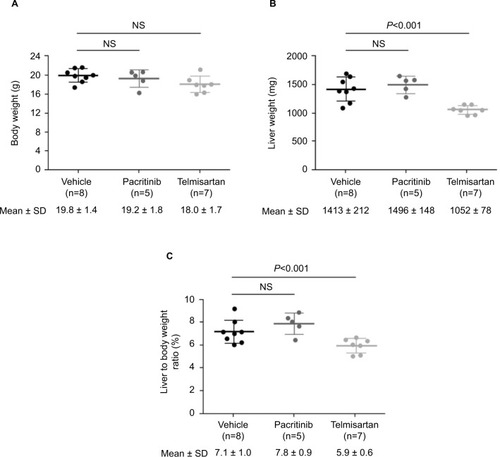
Figure 3 Representative micrography of H&E-stained liver sections on day of death.
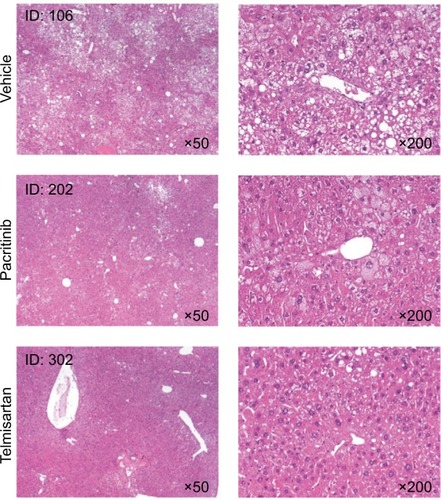
Figure 4 NAFLD-activity scores for all groups on day of death.
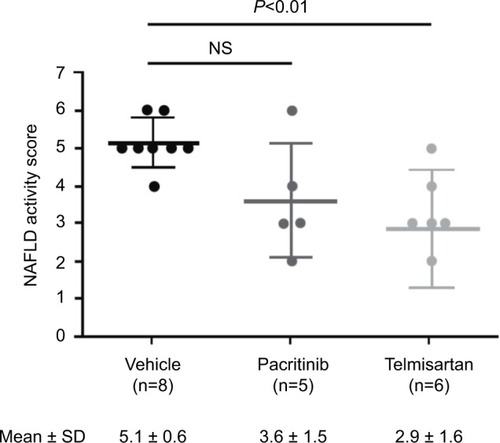
Table 2 Nonalcoholic fatty-liver disease-activity scoreCitation39
Figure 7 Inflammation pathways and potential pacritinib intervention points in fibrosis.
Abbreviations: Pac, pacritinib; PBMCs, peripheral blood mononuclear cells; ECs, endothelial cells.
